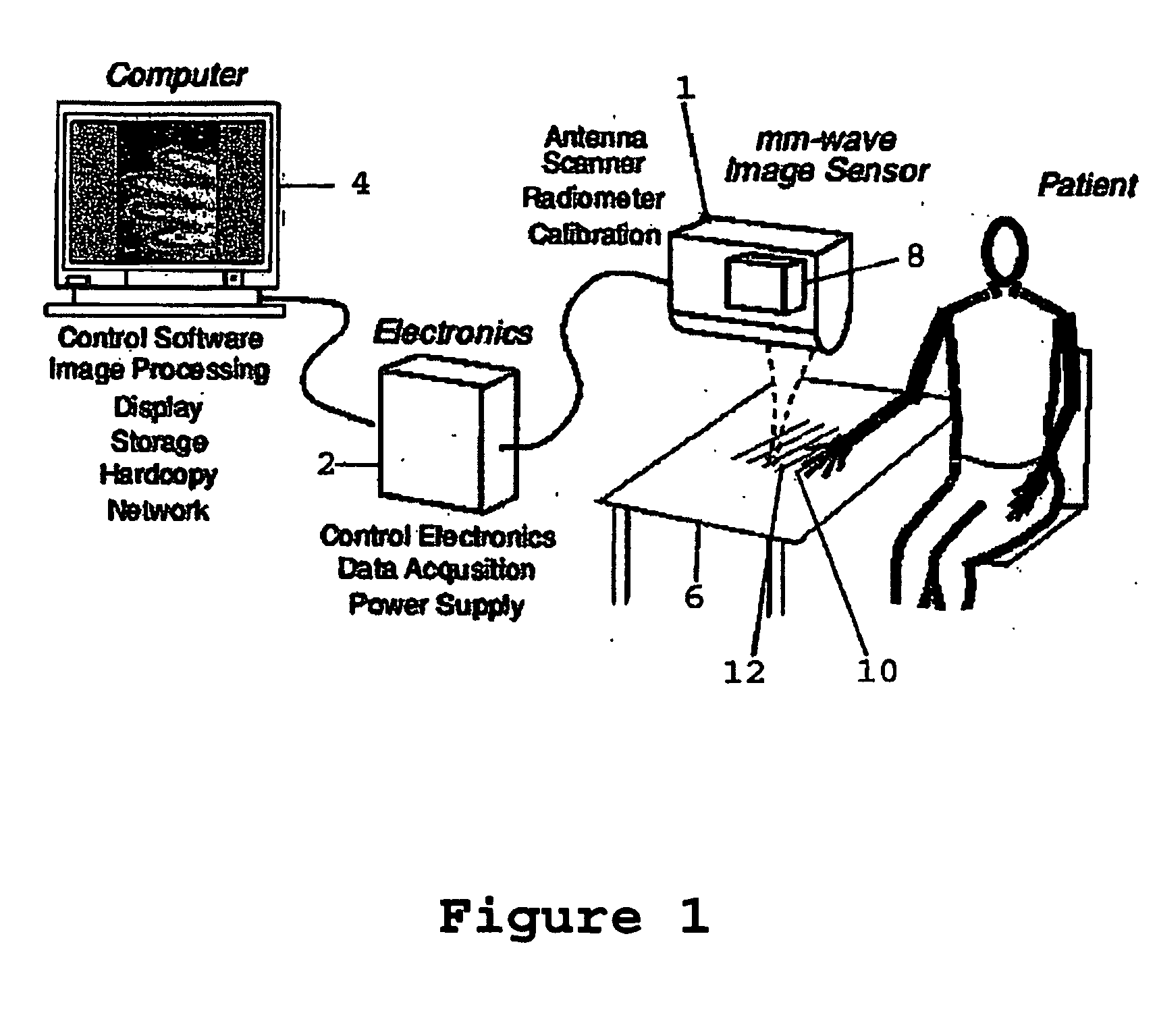Radiometric Calibration
a radiometer and calibration technology, applied in the field of radiometric calibration, can solve the problems of difficult to realise a dicke radiometer, low sensitivity of the switched system, and the effect of the antenna or other components before the switch cannot be calibrated out, and achieve good image quality
- Summary
- Abstract
- Description
- Claims
- Application Information
AI Technical Summary
Benefits of technology
Problems solved by technology
Method used
Image
Examples
Embodiment Construction
[0040]FIG. 1 shows an example of a passive non-contacting imager 1 that is operable to detect millimetre wavelength radiation emitted from the body. By passive it is meant that no radiation is directed onto the patient by the imager. Instead the imager is operable to detect radiation that is naturally emitted from the patient's body. By non-contacting it is meant that the imager does not physically contact the patient. The imager of FIGS. 1 and 2 is ideally operable to form an image from emitted radiation in the frequency range of 10-200 GHz, and preferably in the range 90-100 GHz. This imager is the subject of a co-pending International patent application PCT / GB2003 / 001284, the contents of which are expressly incorporated herein by reference.
[0041] The imager of FIG. 1 is connected to electronic circuitry 2 for controlling and supplying electrical power thereto and also receiving image data therefrom. Received data is processed and displayed as an image on a computer 4. The imager...
PUM
 Login to View More
Login to View More Abstract
Description
Claims
Application Information
 Login to View More
Login to View More - R&D
- Intellectual Property
- Life Sciences
- Materials
- Tech Scout
- Unparalleled Data Quality
- Higher Quality Content
- 60% Fewer Hallucinations
Browse by: Latest US Patents, China's latest patents, Technical Efficacy Thesaurus, Application Domain, Technology Topic, Popular Technical Reports.
© 2025 PatSnap. All rights reserved.Legal|Privacy policy|Modern Slavery Act Transparency Statement|Sitemap|About US| Contact US: help@patsnap.com



